Este post também está disponível em:
Português
English
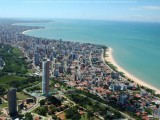
Tourists who come to João Pessoa in the Paraíba find, in addition to sun and beach, a tranquillity that contrasts with the hustle and bustle of the big cities of the South and even the large capitals of the Northeast.
There have been several names given to the piece of land that stretches between the Sanhauá River and the Atlantic Ocean.
In 1585, the year the city was founded, it was called Nossa Senhora das Neves; in 1588, it became known as Filipéia, in honour of the then king of Portugal and Spain, Filipe I.
With the Dutch invasion in 1634, it was renamed Frederica, in honour of Prince Frederick of Orange.
Once the invaders were expelled in 1654, it was renamed Paraíba – which in Tupi means “arm of the sea”.
Finally, in 1930, the city was named after its governor, whose assassination that year caused intense popular commotion and national repercussions.
The generous presence of the sun and the sea calmed by the reefs make this capital of so many names an irresistible tourist destination.
The beaches invite entire families to take a walk or a quiet swim at sunrise or in the late afternoon; the waterfront is protected by a law that prohibits the construction of buildings higher than four storeys – a wise measure that guarantees sunlight on the beaches throughout the day.
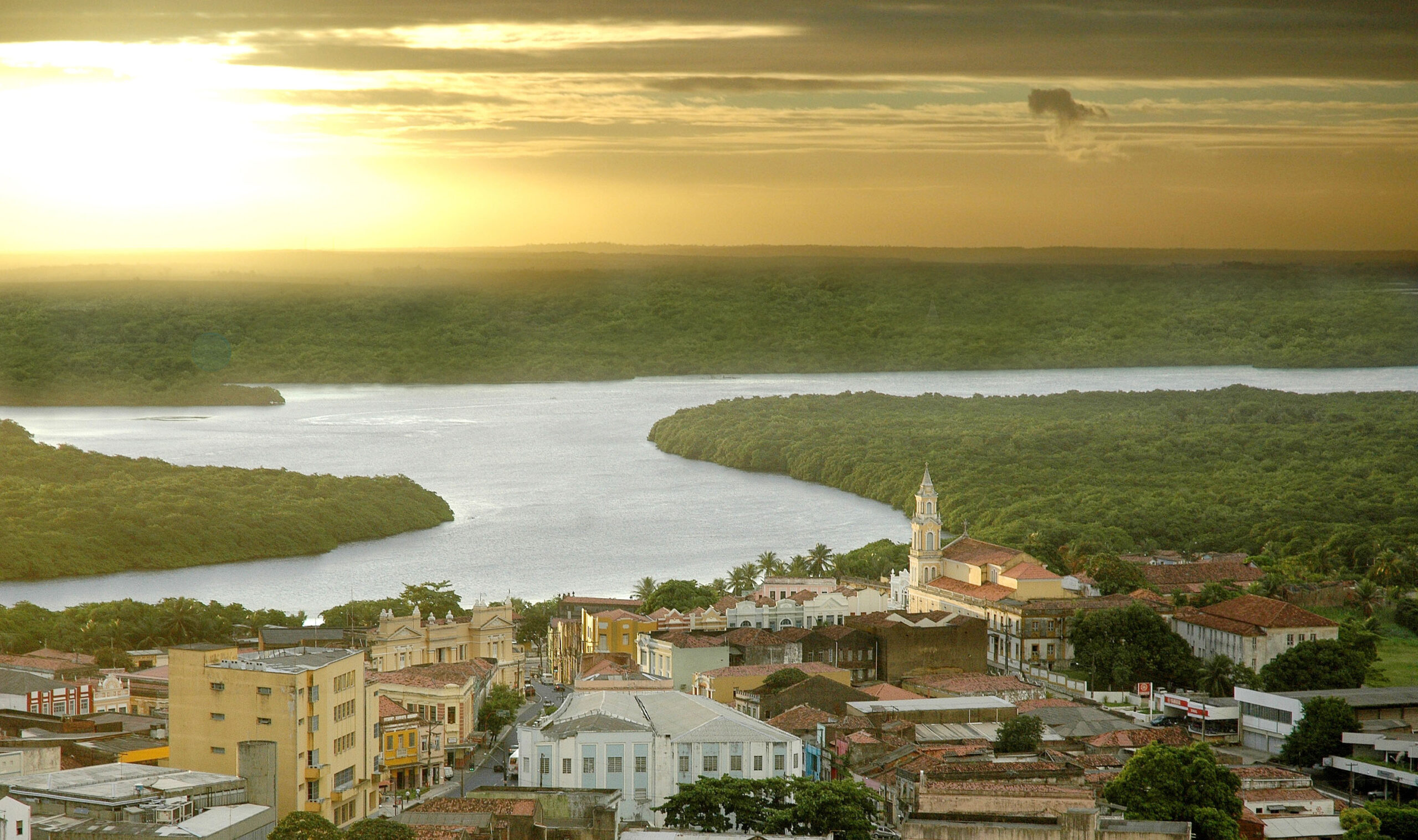
In addition to its natural beauty, the capital of Paraíba has an enchanting collection of baroque buildings, and good places to buy regional handicrafts.
João Pessoa, which is 120 kilometres from Recife and 180 from Natal, can be reached via the BR-101 highway.
Videos Tourist Spots and Historical Centre of João Pessoa PB


Centro histórico de João Pessoa PB

Praias de João Pessoa PB

Praia do Sol em João Pessoa

João Pessoa PB - Reportagem
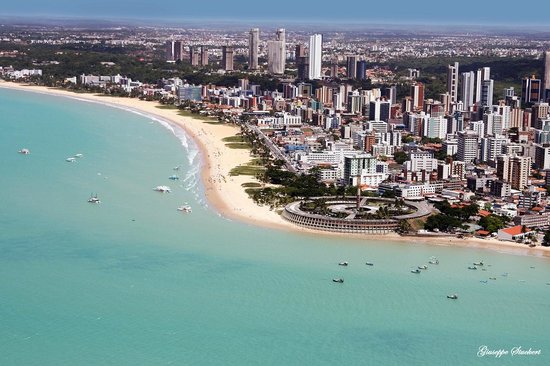
João Pessoa - Cidade que Encanta
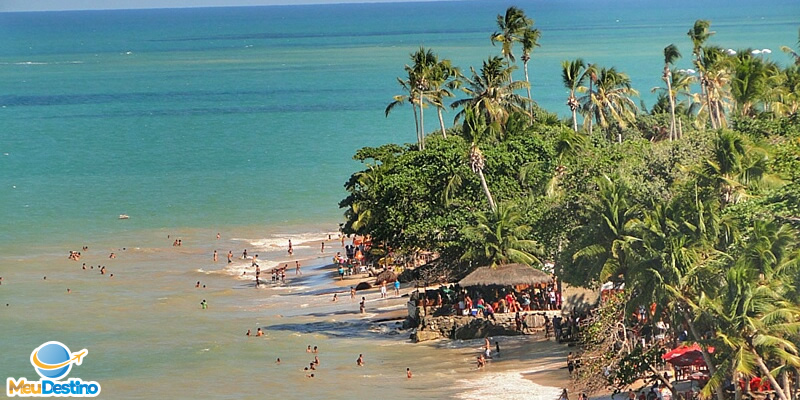
João Pessoa - Melhor Época do Ano

O QUE CONHECER NO CENTRO HISTÓRICO DE JOÃO PESSOA
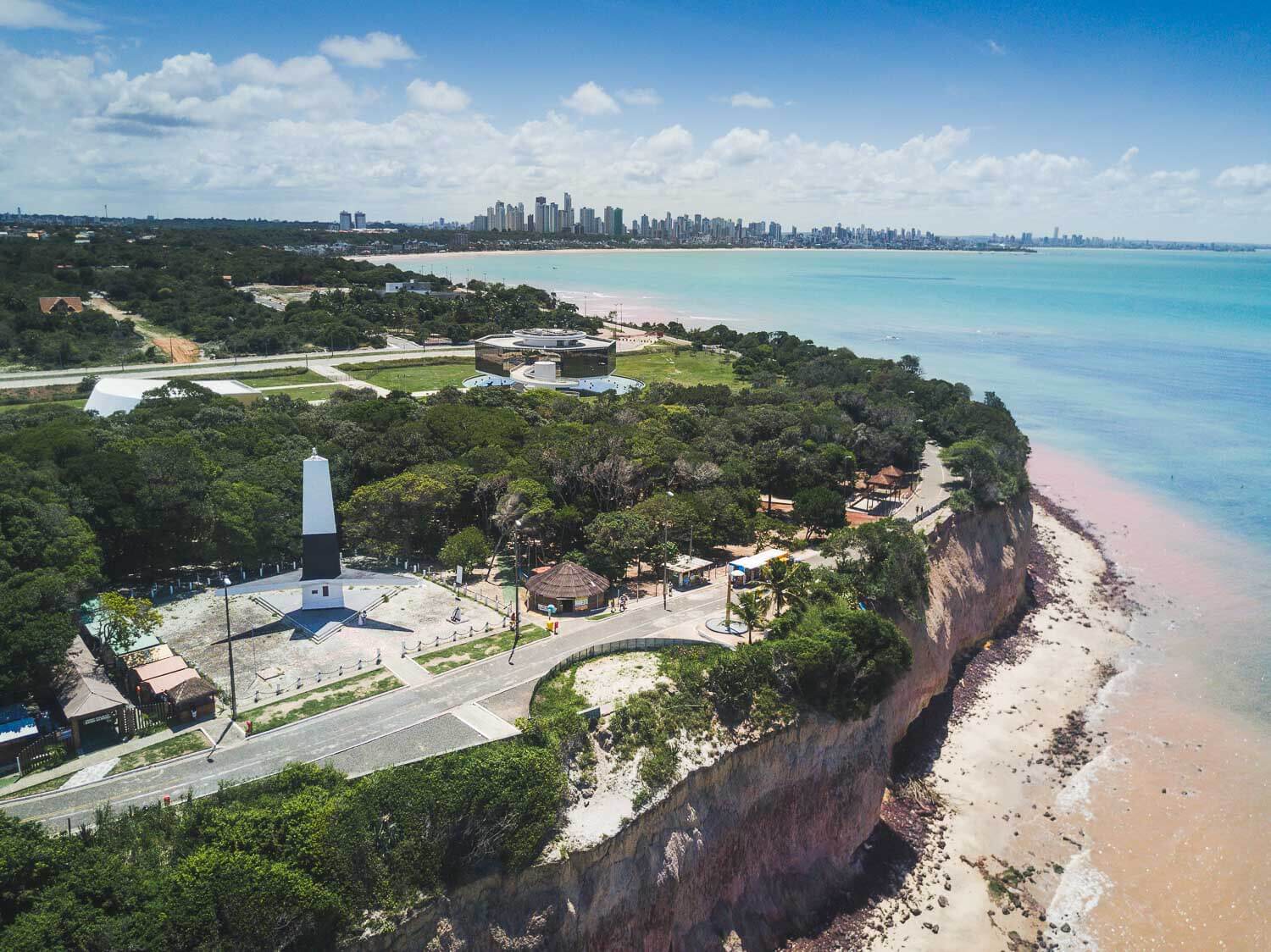
Roteiro completo em João Pessoa
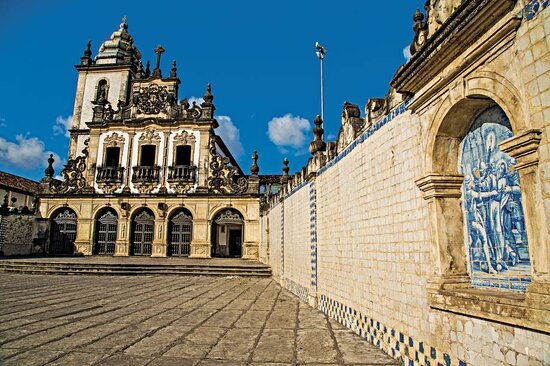
Centro Cultural São Francisco em João Pessoa
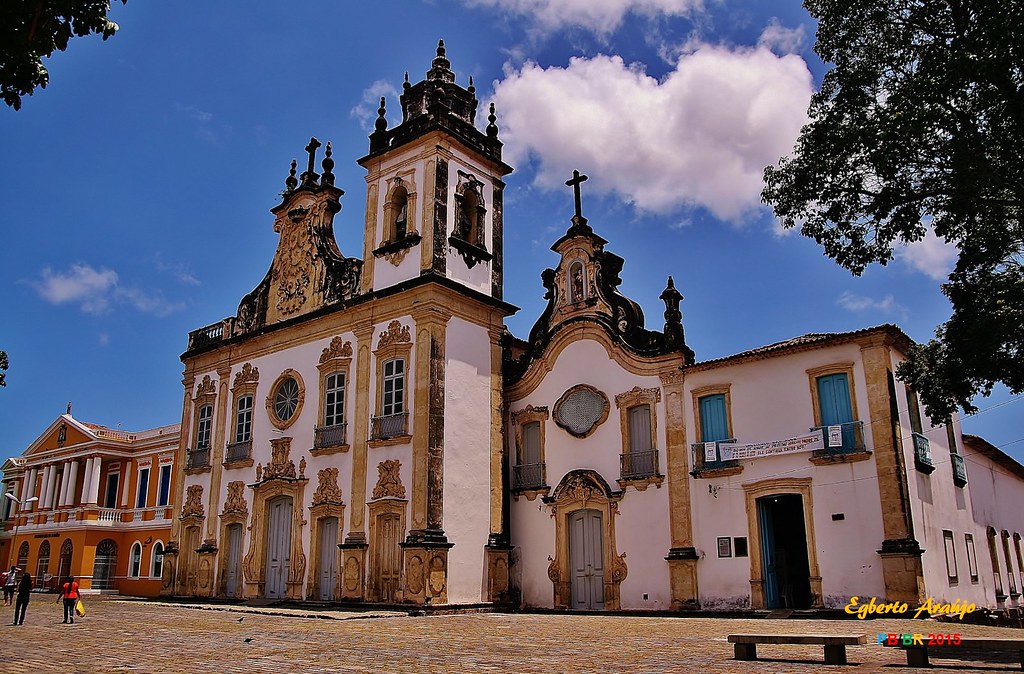
IGREJA NOSSA SENHORA DO CARMO EM JOÃO PESSOA01:41
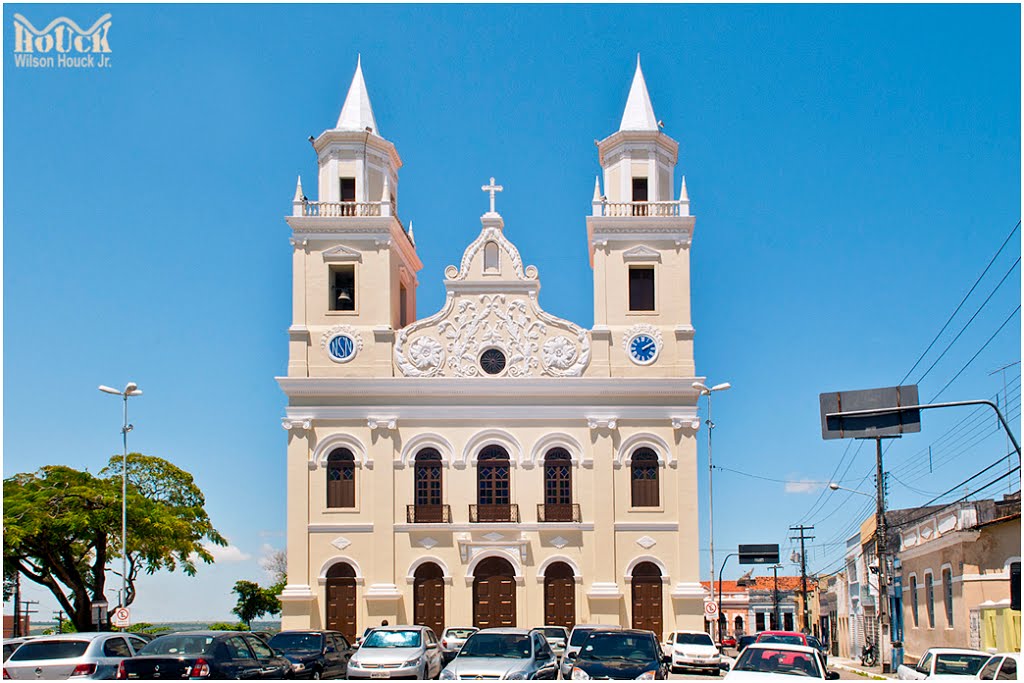
BASÍLICA NOSSA SENHORA DAS NEVES EM JOÃO PESSOA01:41
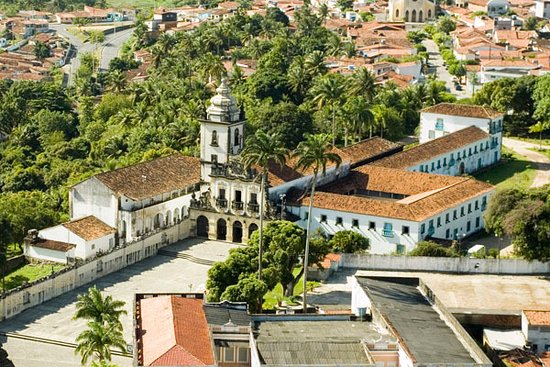
Centro Cultural de São Francisco Centro Cultural em João Pessoa PB01:29
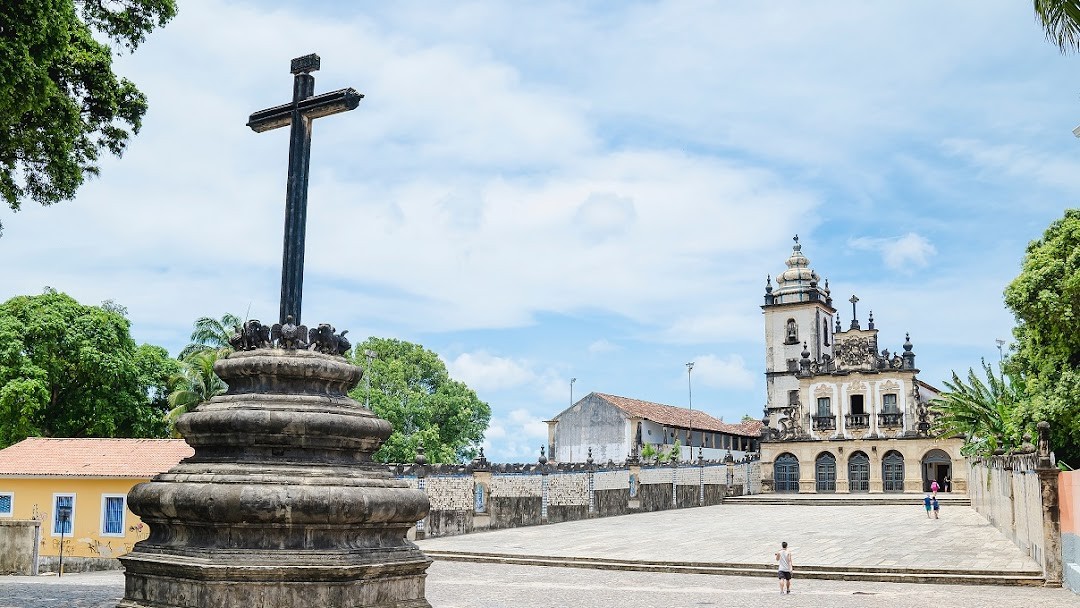
Centro Cultural São Francisco - Reportagem05:56
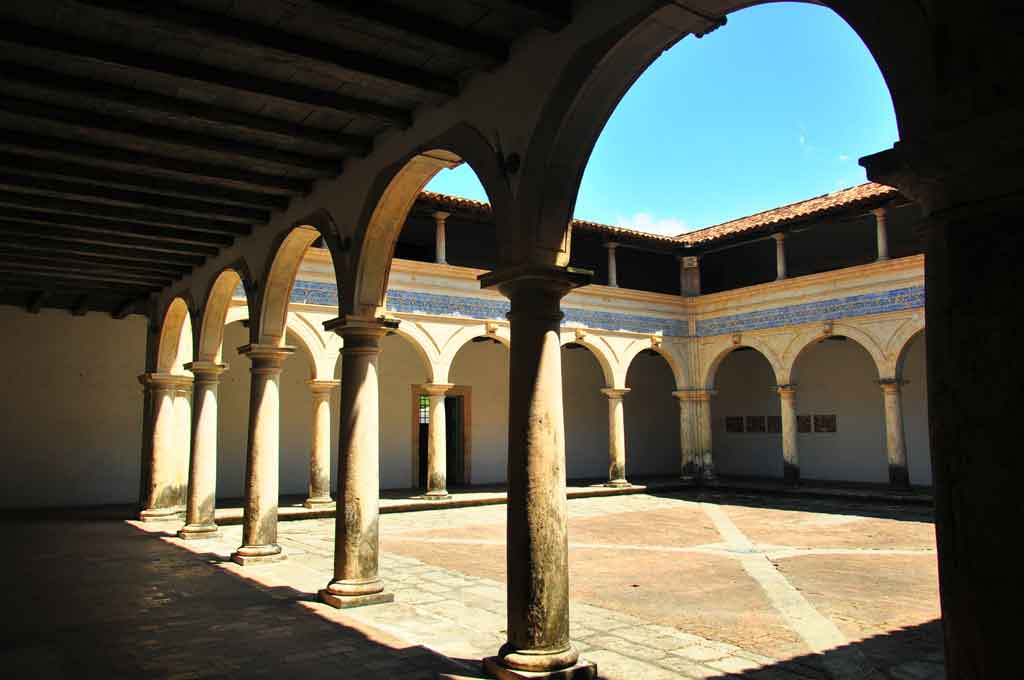
Igreja de São Francisco em João Pessoa09:29
Tourist Spots of João Pessoa PB
Beaches of João Pessoa PB
The Coast of João Pessoa has the popular beaches of Cabo Branco, Tambaú, Manaíra and Bessa. Boardwalks that make it possible to walk or stroll.
Cycle paths that offer the practice of activities such as cycling, rollerblading and skateboarding. In addition, it is from these beaches that nautical trips to the Natural Pools of Seixas, Picãozinho and Natural Pools of Bessa leave.
On Bessa beach, there is also the possibility of kayaking and Stand Up Paddle activities – the latter can be done, even on the night shift. But, all of them in line with the tide table.

The calm waters of the beaches of João Pessoa – largely the result of a natural breakwater formed by reefs – are the end of a scenario increasingly sought after by tourists visiting the Northeast.
Tambaú Beach, the city’s central beach, bustles with the movement of hotels, bars, kiosks and street vendors.
On its wide strip of sand, locals and visitors walk, run, play football and cool off. In summer, the sea dries up so much that you can see the so-called “Picãozinho”, a coral formation.
To the north of Tambaú, and without much difference from it, are the urban beaches of Manaíra and Bessa.
In the opposite direction, the first beach near Tambaú is Cabo Branco, which in the late afternoon is also taken by people willing to walk, run or play ball; in the morning, between 5 and 8 am, the avenue that accompanies the beach is closed for residents and visitors to walk with their children, rollerblade and do gymnastics.
Ponta do Seixas is home to the Cabo Branco Lighthouse, the easternmost point in South America; from the top you can enjoy a magnificent view of the city’s waterfront.
A must-see during the day, the place should be avoided at night, when it becomes unsafe. Still heading south, the next beach to Ponta do Seixas is Penha, which is very popular in João Pessoa.
It is home to the famous church, whose staircases continue to receive promise payers, who make a point of climbing them on their knees.
Historical Centre of João Pessoa
The Historic Centre of João Pessoa is located in the city of João Pessoa, capital of the Brazilian state of Paraíba.
It was recognised as a national heritage site of Brazil on 6 December 2007, having been inscribed in the Books of the Historical and Archaeological, Ethnographic and Landscape Tomb of the National Historical and Artistic Heritage Institute (Iphan).
The site covers an area of 37 hectares and an estimated 700 buildings, as well as streets, squares and historic parks that make up this ensemble, comprising most of the Varadouro and Downtown neighbourhoods.
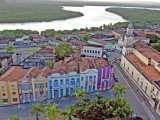
Its buildings make up a scenario of different styles and eras full of sobrados, squares, colonial houses and secular churches, being considered the main architectural collection of Paraíba, reporting the various phases of local history, and one of the largest and most important historical sites in Brazil.
The delimited area has assets that represent various periods in the history of João Pessoa, such as the baroque of the Church of the Third Order of São Francisco; the rococo of the Church of Nossa Senhora do Carmo; the mannerist style of the Church of Misericórdia, all from the 17th century; the colonial and eclectic architecture of the civilian houses, as well as the art-nouveau and art-deco, from the 1920s and 1930s, predominant in Praça Antenor Navarro and the former Hotel Globo, the first in the city, today transformed into a cultural centre.
Among the colonial mansions and buildings with baroque characteristics, the architectural ensemble of the Church of São Francisco and the Convent of Santo Antônio also stands out.
Administered in the past by Franciscan friars, the Church of São Francisco has a churchyard with Portuguese tiles representing the stations of the Passion of Christ.
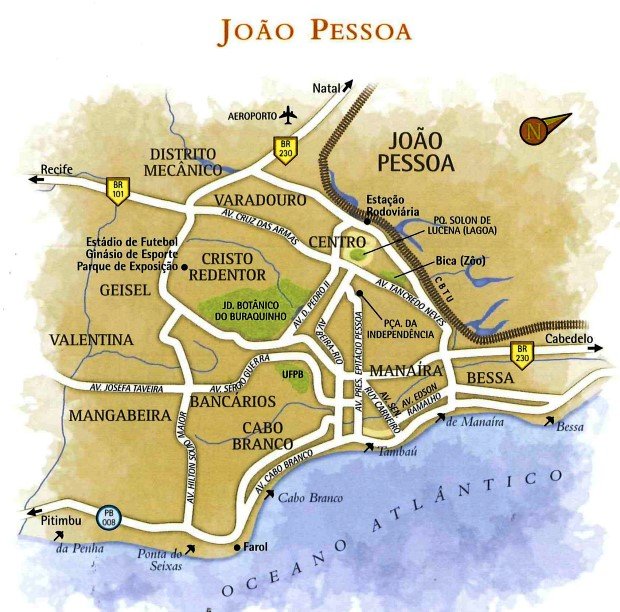
To the left of the church is the Golden Chapel, with an image of St Anthony and carvings covered in gold. In the external courtyard is a huge limestone cross, considered the largest Baroque monument in Latin America.
In Praça João Pessoa is the Legislative Assembly building, in very modern architecture, contrasting with the antiquity of the Palácio da Redenção (seat of the State Government) and the Court of Justice.
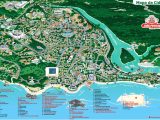
In the square is also located the building of the former Faculty of Law, a place of many historical and political events, which stands out for its beautiful architecture.
In Praça Pedro Américo you will find the Santa Roza Theatre, inaugurated in 1889, in Baroque style with a Greco-Roman façade and one of the oldest theatres in Brazil.
Tourist attractions in the Historic Centre of João Pessoa
1. CHURCH OF NOSSA SENHORA DO CARMO
A The Church of Nossa Senhora do Carmo, located in the Historic Centre of the city, in Dom Adauto Square, comprises an architectural ensemble, built by the Carmelites, composed of the Church of Nossa Senhora do Carmo and the Episcopal Palace (former Carmelite Convent and current seat of the Archdiocese of Paraíba), both built in the 16th century and listed by the Institute of Historical and Artistic Heritage of the State of Paraíba (Iphaep), and the Church of Santa Teresa de Jesus of the Third Order of Carmo, dating from the 18th century and listed by the Institute of National Historical and Artistic Heritage (IPHAN).
The religious order of the Carmelites probably arrived in the state of Paraíba in 1591, along with the Benedictines, Franciscans and Jesuits, with the aim of evangelising and catechising the Indians.
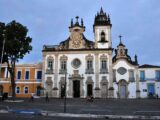
At the end of the 16th century, the Carmelites began building their own dwelling in Paraíba. It took a long time to complete the work, which included the Carmelite Convent, the church of Nossa Senhora do Carmo, the chapel of St Teresa and the house of exercises for the Third Brothers.
The Carmelites began to build their own dwelling in Paraíba.
Address: Praça Dom Adauto, s/n – Centro
2. BASILICA NOSSA SENHORA DAS NEVES

The Basilica Nossa Senhora das Neves was built in 1586 by the first colonisers of Paraíba as a way of honouring Our Lady of the Snows.
It was a simple mud building that was rebuilt in the early 17th century. Renovations and remodelling continued throughout the 17th and 18th centuries.
It was a simple, rammed earth building which was rebuilt in the early 17th century.
In 1881 the church began to be rebuilt, taking on the eclectic style it has today. The consecration took place on 1 August 1894 with the title of Cathedral, since the Diocese of Paraíba had been created on 4 March, with its seat in the Church of Nossa Senhora das Neves.
In 1914, the diocese was elevated to the title of Archdiocese and Metropolitan See. During the episcopate of Bishop Marcelo Pinto Carvalheira (1995-2004), the Cathedral underwent a major renovation and received the title of Basilica in November 1997.
Address: Praça Dom Ulrico, s/n – Centro
3. MONASTERY OF SÃO BENTO
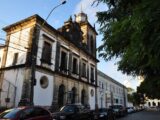
The Monastery of São Bento, located in the Historic Centre of João Pessoa, is a Baroque-style complex built by Benedictine monks, formed by the monastery and the church, considered one of the most important in Brazil.
The monastery dates from the 17th century, and the church from the 18th century, which was listed by the National Historical and Artistic Heritage Institute (IPHAN) on 10 January 1957.
The monastery dates from the 17th century, and the church from the 18th century.
In 1995, the complex was restored and nowadays music concerts and sung masses are held inside.
The complex, consisting of the church and the monastery, was built under the invocation of Our Lady of Mount Serrat. The work began when the Benedictines arrived in João Pessoa, at the time when the state was the Royal Captaincy of Paraíba, around 1590.
The monastery was built under the invocation of Our Lady of Mount Serrat.
After the building, it became one of the first and main places for religious worship established in João Pessoa. According to IPHAN, this complex is among the most important monuments in the country, in its style and time.
The building is one of the most important in João Pessoa.
Av. Gen. Osório – Centre
4. ANTENOR NAVARRO PRAÇA
It is the beginning of Maciel Pinheiro Street. It arose from urbanisations promoted in the area during the late twenties (20th century) and early 1930s, where a set of two- and three-storey townhouses where a pharmacy, a boarding house and other commercial and residential establishments operated were demolished, giving way to a free area to be conceived as a square with jambeiros, benches and short walks for meetings and interaction of the residents of local residences, being delivered to the population in 1933.
The houses on its sides date from the same period. These houses housed commercial premises on the ground floor and the offices of the best liberal professionals on the upper floor. The buildings have eclectic architecture, with some examples in art-décor.
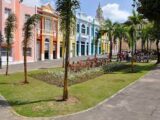
Today it houses the João Pessoa Cultural Foundation (FUNJOPE) and cultural centres. In 1998 it was revitalised. Nearby is the triangular block known as “ferro-de-engomar”. For those who like nightlife, Praça Antenor Navarro has become a good option in João Pessoa.
The revitalisation of the place has brought several bars, cafés, galleries and leisure centres to the city. In addition, it is an environment often requested for photography, with its colourful sobrados in the early 20th century houses, which makes the place a historical-tourist centre.
Location: Historical Centre of João Pessoa – PB
Year of construction: Late 1920s
5. PRAÇA JOÃO PESSOA
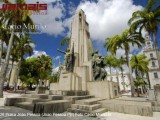
The buildings of the state power stand around this square.
The highlight is the Palácio da Redenção, the seat of government.
The building, which houses the ashes of João Pessoa, was built by the Jesuits in 1586, and over time has undergone a series of interventions – the last of which was the removal, in 1995, of the mosaic floor decorated with swastikas.
Next to it is the Faculty of Law of Paraíba, which is housed in the former building of the Liceu Paraíbano, inaugurated in 1745.
On the opposite side of the square is the Court of Justice, whose building, dating from 1919 and listed by the state’s Historical Heritage Institute, houses the crypt of former president Epitácio Pessoa in the basement. It is open to monitored visitation in the morning.
6. CHURCH AND LARGE SÃO FREI PEDRO GONÇALVES

The original chapel of St Friar Peter Gonçalves was built in the 17th century and demolished in 1843; the church that replaced it on the site was altered in 1916, which determined its current features.
In 2002, a restoration found the first foundations, which are now on display for visitors (largo Frei Pedrp Gonҫalves, s/n, Varadouro).
On the church square, to the left, stands another landmark of João Pessoa, the Hotel Globo building, dating from 1929. The building, now home to the Spanish consulate, has neoclassical and art deco influences.
The best time to visit the square is at dusk, when the sun casts an orange light on the church and the surrounding houses, colouring everything in pastel colours. After 6pm, the place becomes deserted and unsafe.
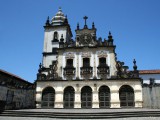
7. SÃO FRANCISCO CULTURAL CENTRE
The Cultural Centre of São Francisco functions in an architectural complex formed by the Church and Convent of Santo Antônio, the Chapel of the Third Order of São Francisco, the Chapel of São Benedito, the House of Prayer of the Third (called the Golden Chapel), the Cloister of the Third Order, a fountain and a large churchyard with a cross, constituting one of the most remarkable testimonies of the Baroque in Brazil.
Due to its importance, it was listed by IPHAN. When it was founded, the church was dedicated to St Anthony, and apparently the change of name occurred at the beginning of the 20th century, due to a popular custom, but it is still known also by the old denomination.
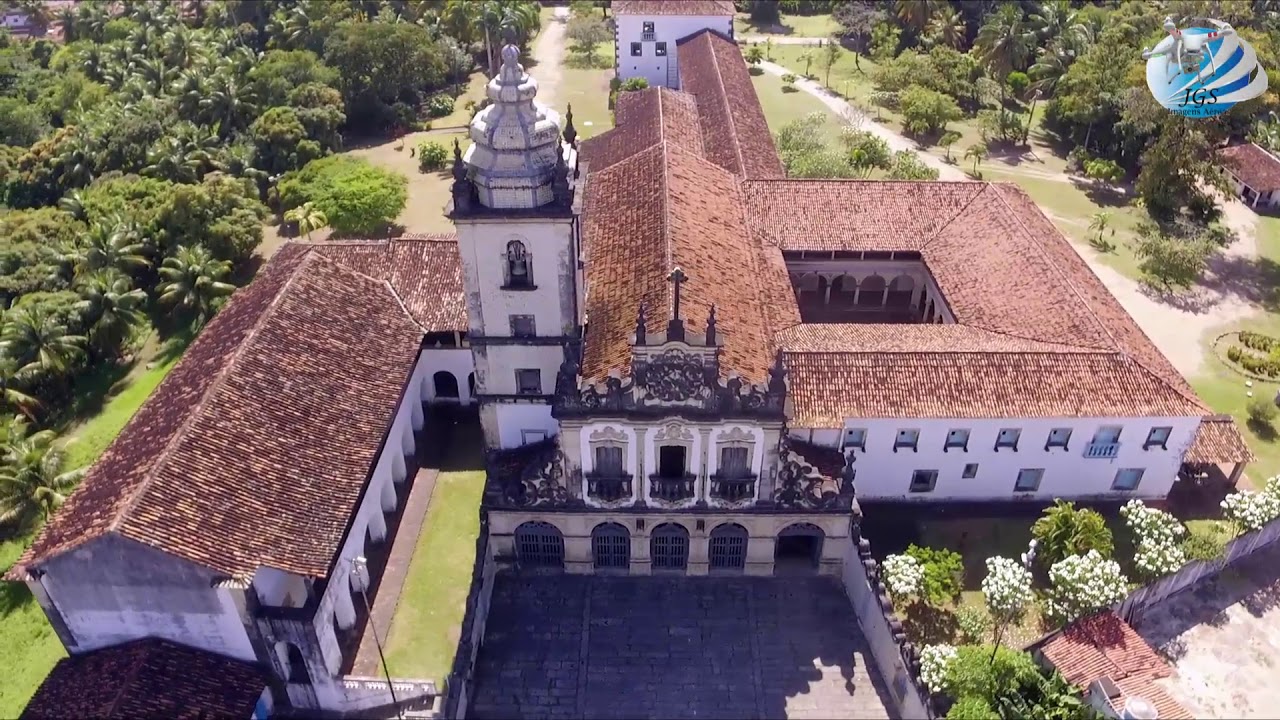
The history of this architectural ensemble – one of the most important of the Brazilian Baroque – begins in 1589, when the Franciscans built a mud convent.
In 1602, they began to erect the church of São Francisco with limestone and Baroque architecture.
The date engraved on its frontispiece is 1779; that of the tower is 1783 and that of the churchyard, 1788.
Tourists may forget the dates – but they will be hard-pressed to forget the interior of this ancient building: the nave, surrounded by a tile panel depicting the story of Joseph in Egypt, contains a beautifully carved pulpit.
The painting on the ceiling shows Saint Elijah. On the left is the Golden Chapel, with the image of St Anthony and carvings covered in gold.
In the choir there are beautiful chairs carved in rosewood, made in the 18th century, and eight panels from the same period.
Operating since 1990 as a cultural centre, the convent also houses a museum of sacred art, another of popular art and the Stone Gallery, where fragments of rocks from different periods, found during the restoration work, are exhibited. Praҫa de São Francisco, s/n, Centre.
See also History of the São Francisco Cultural Centre in João Pessoa in Paraíba.
8. RELIGIOUS ARCHITECTURE
In addition to the architectural ensemble of São Francisco and the church of São Frei Pedro Gonçalves, other religious buildings attract attention in the capital of Paraíba.
The church of São Bento, dating from the early 18th century and listed by IPHAN, preserves its baroque façade, although its interior has been de-characterised (Rua Gal. Osório, 36, Centro).
Also Baroque is the church of Nossa Senhora do Carmo, attached to the chapel of Santa Teresa d’Ávila, which is in the process of being restored; its carved stone façade and rich interior woodwork stand out (Praҫa D. Adauto, s/n, Centre).
The parish church of Nossa Senhora das Neves was built in the 19th century on the same site where the city’s first chapel was erected in 1585. Its eclectic façade dates from a renovation carried out between 1881 and 1884 (Praҫa D. Ulrico, s/n, Centre).
Modest and without ornaments, the Misericórdia church was built in the 16th century; in the chancel arch you can still see the emblem of the Portuguese Crown (Rua Duque de Caxias, s/n, Varadouro).
9. HOUSE OF PÓLVORA
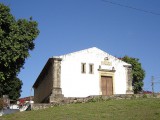
Located on a strategically high point, this small fortress built in 1710 was used as an ammunition depot.
Built of stone, it now houses the Walfredo Rodrigues Photographic Museum, which has a small collection of old images of the city.
The big attraction, however, is the view of the Sanhauá River. Lad. São Francisco, s/n, Varadouro.
10. SANTA ROSA THEATRE
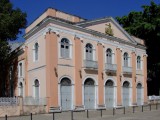
Between the start of construction (1853) and the inauguration (1889) 36 years passed, during which time the theatre was used as a military infirmary.
When the neoclassical building finally opened its doors, it was an imposing and exquisite facility made of German pine.
Renovated in 1989, the Santa Rosa has a capacity of 418 people. Praҫa Pedro Américo, s/n, Centre.
11. TITO SILVA & CIA WINE FACTORY
Inspired by Frenchmen visiting Paraíba, businessman Tito Henrique da Silva founded a cashew wine factory in 1892. Production won international awards in the early 20th century and continued until the 1980s.
In debt, the factory closed its doors, but all its assets – building, machinery and equipment – were listed by Iphan. Today, the three blocks of the old company store presses, barrels and other parts.
There is also the Oficina Escola de Revitalização do Patrimônio Cultural de João Pessoa, a civil society that offers restoration courses to teenagers who, after graduating, work to preserve the city’s assets. Rua da Areia, 33, Varadouro.
12. LITERARY MUSEUMS
Two of the greatest representatives of Brazilian regionalist literature, José Américo de Almeida (1887-1980) and José Lins do Rego (1901-57), were from Paraíba. The former was born in Areia and the latter in Pilar.
It is understandable, therefore, that both are honoured in the state capital with cultural spaces bearing their names.
The José Américo de Almeida House Foundation is located in the house where the writer and politician (he was governor of Paraíba in 1950) lived from 1953 until his death. In addition to his personal belongings, it houses his library – concise, but full of bibliography on the Northeast.
Located in Cabo Branco, the residence, facing the sea, was a landmark at the beginning of the urbanisation process of that part of the coast.
As well as looking after the collection of the novelist of A bagaceira, published in 1928, the foundation is responsible for projects to preserve the state’s intangible heritage (Av. Cabo Branco, 3336, Praia do Cabo Branco).
The José Lins do Rego Cultural Space Convention Centre houses a museum dedicated to the author of Menino de engenho (1932).
Stored in showcases, manuscripts, books and even the fiction writer’s typewriter can be seen there. José Lins do Rego spent part of his life in Recife and died in Rio de Janeiro (Rua Abdias Gomes de Almeida, 800, Tambauzinho).
See also History of the Foundation of Paraíba and João Pessoa



















